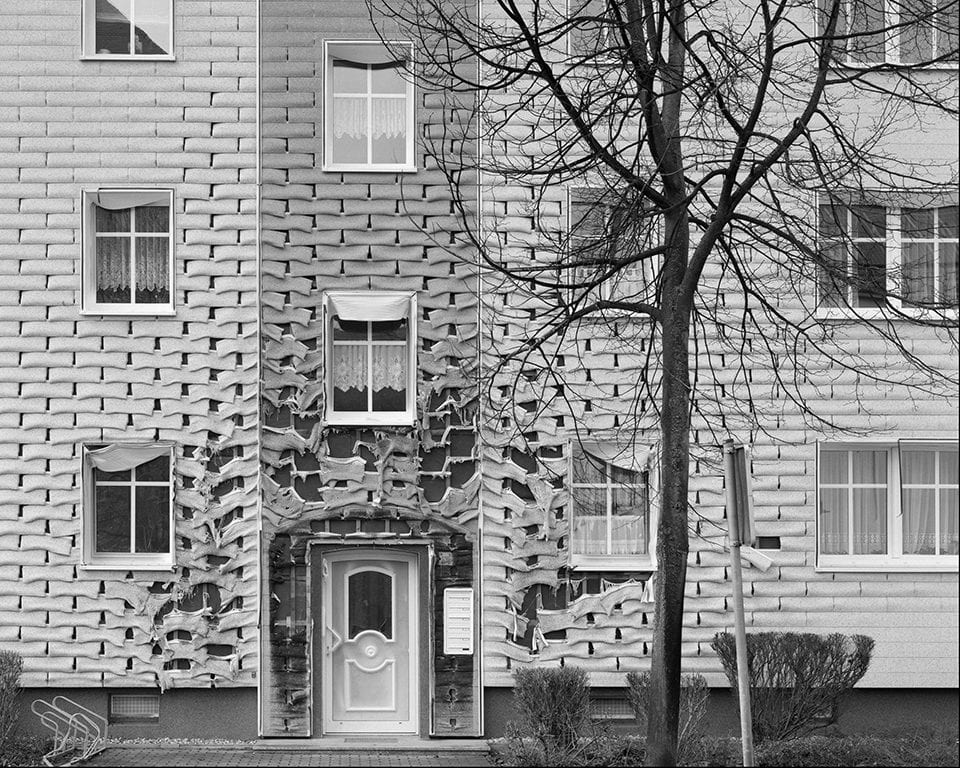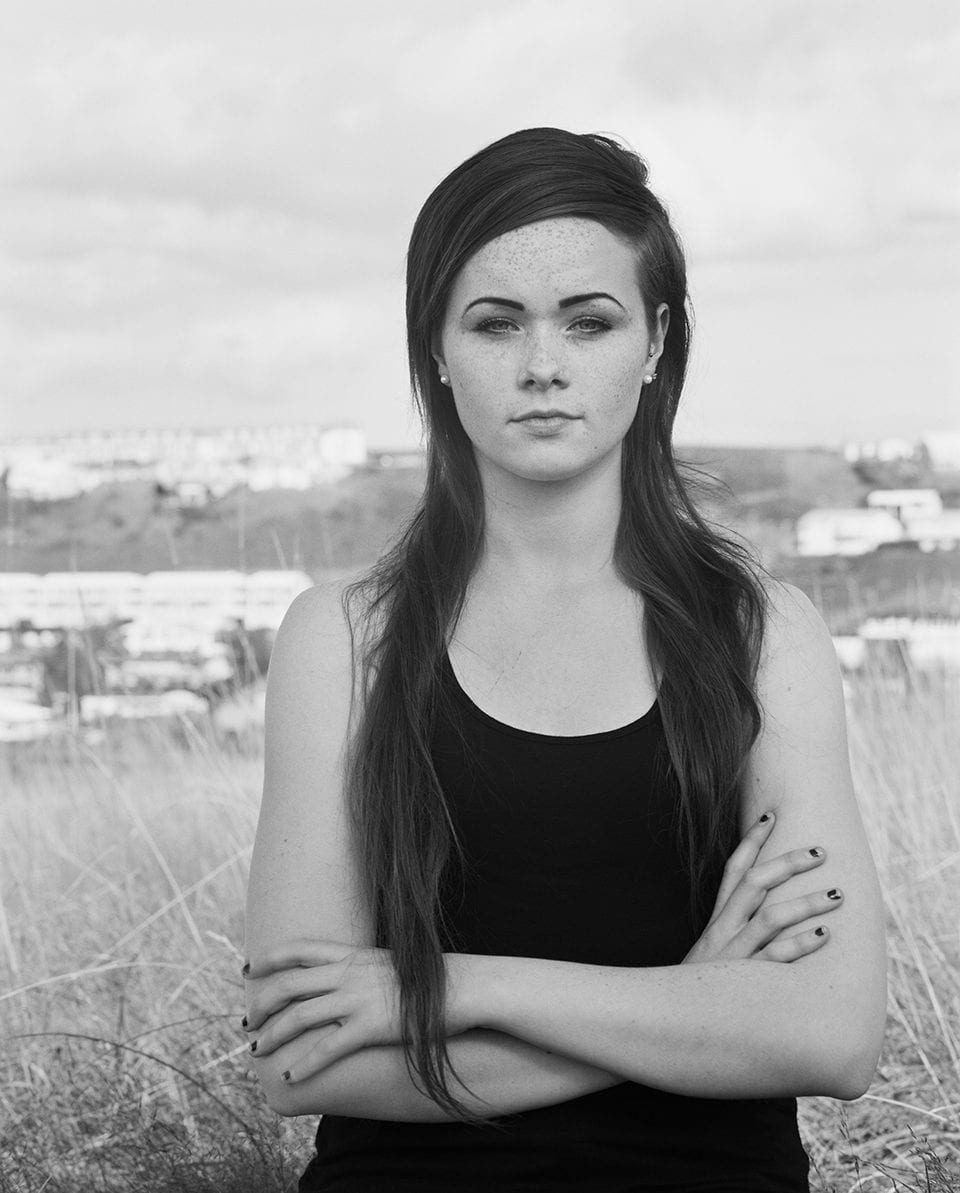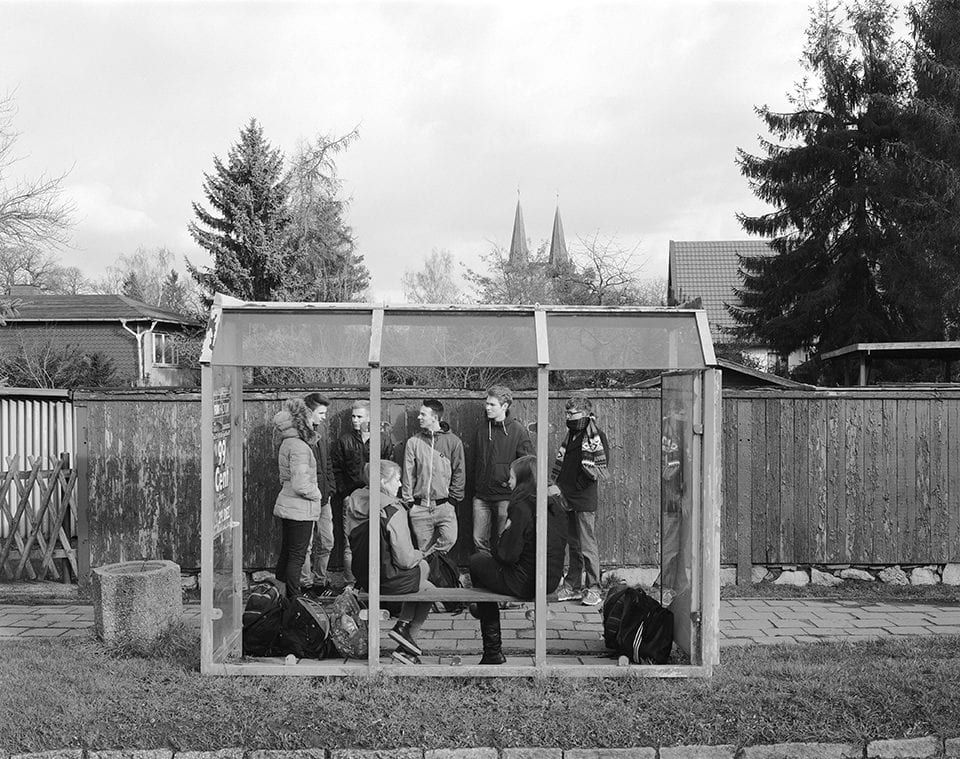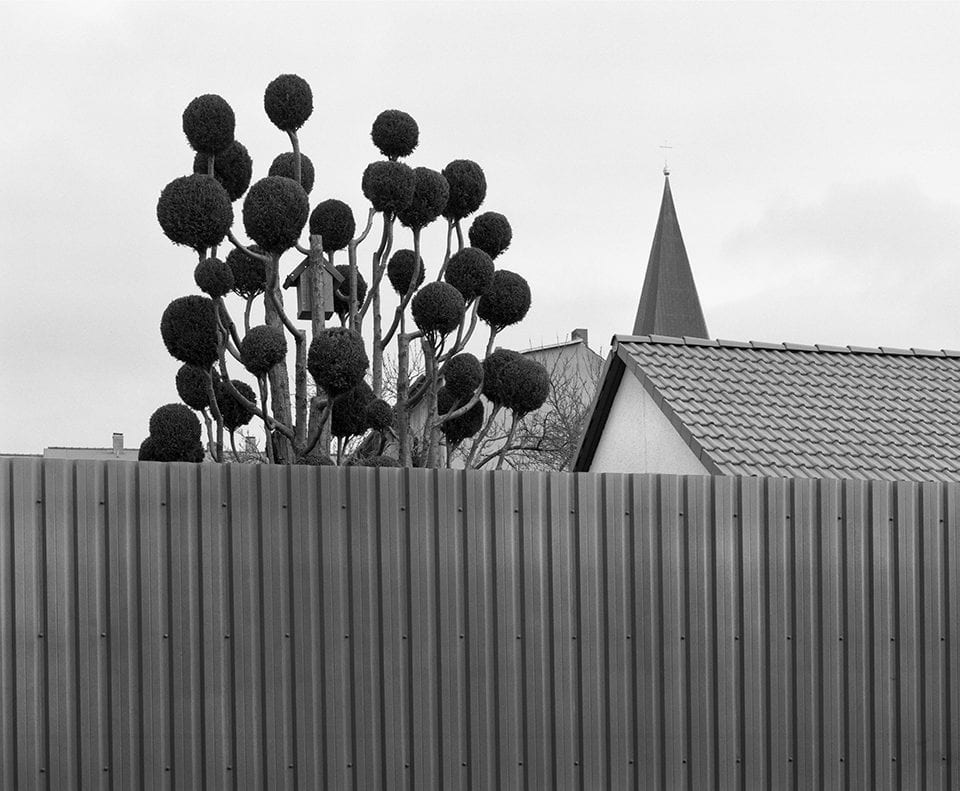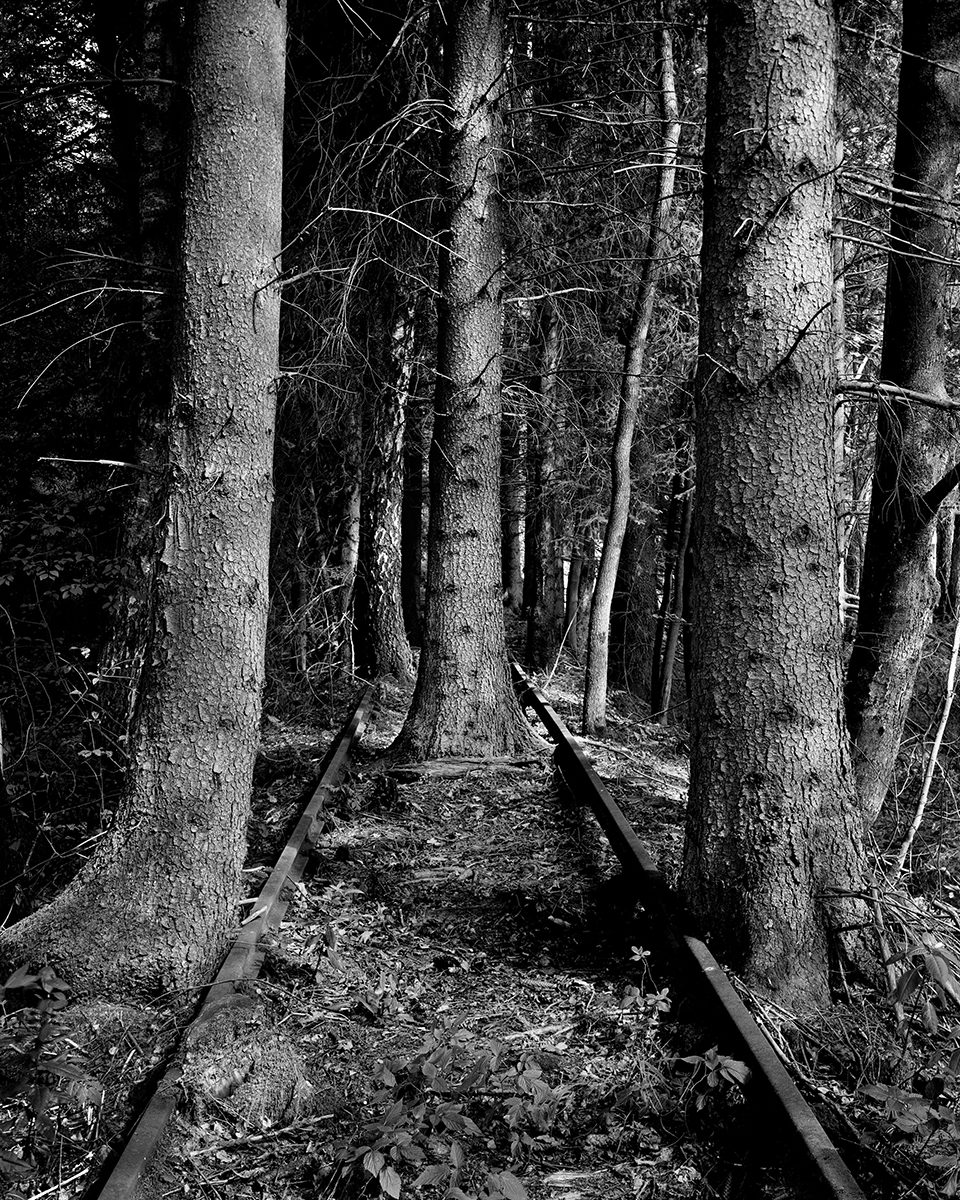The German democratic republic was a country ruled by surveillance
and constant monitoring; these photographs provide a window into a past era.
Ute Mahler (b. 1949) and Werner Mahler (b. 1950) grew up in the former German Democratic Republic (GDR, 1949-1990). Together with five other photographers, they founded the Ostkreuz photo agency in 1990, named after the S-Bahn station – the busiest traffic hub in Berlin. Now, Fotomuseum Den Haag is showing a major joint retrospective of their work from the 1970s to the present-day, highlighting groundbreaking reports and social documentaries from a range of different collaborative series. The most recent images from Kleinstadt (2015-2018) depict landscapes and provincial towns all over Germany, taken in the decades after the fall of the Berlin Wall.
A: Your practice is built upon a simple idiom: “Do not create, recognise and interpret a situation.” Can you expand on this and how it relates to your work?
UM & WM: We do not stage any of our pictures. We start with a documentary approach and show – through subjective photographs – what we have found. In this way, we discover a sense of reality. It is our reality, however. History becomes tangible when it’s told about real people.
A: The Fotomuseum Den Haag retrospective takes place 30 years after the fall of the Berlin Wall. Do you think these images have a renewed sense of significance given this important historical date?
UM & WM: 30 years is a long time, and we live in a fast-paced world. One forgets. The generations after us might find it hard to understand the complex workings of the GDR, as memory begins to move into the past. These new generations perhaps cannot imagine how one could live in such a country, where we could not officially say what we thought. In addition, a large part of the world was closed off to us – so there was a lot that remained hidden or concealed. One of the tasks of photography is to document the underpinnings of events in a certain period in time. When we took pictures in the 1970s and 1980s, we would never have imagined that one day the GDR would not exist. At that time, we wanted to show life as we experienced it – just as it was. Today, the images act as documents from a vanished country. In this way, they are given a renewed sense of purpose.
A: The agency you co-founded – Ostkreuz – refers to a train station in Berlin. Figuratively, it alludes to an intersection where people can set out in any direction. Why did you start this agency and what opportunities did it present – both commercially and artistically?
UM & WM: In 1990, we, alongside Sibylle Bergemann, Harald Hauswald, Jens Rötzsch, Harf Zimmermann and Thomas Sandberg, founded the agency. We had different styles, but we all wanted to work in the documentary field – to earn money with photography but also to be able to realise or own artistic projects. Today we are made up of 23 members. The youngest member is 23, the oldest is 70. Half of them are women. The agency is a forum for us to create conversation, but it is also a business venture. It was clear to us from very early on that we were stronger together. In the GDR, when the collective was praised as an ideal, we were all lone fighters. In this new society where individuality is so important to so many people – coming together is the key. The name “Ostkreuz” is also a symbol of departure and movement into new territories and landscapes.
A: What photographers does Ostkreuz represent now and what kinds of works are they creating?
UM & WM: We mainly work in documentary in the magazine sector. However, every five years, we come together to respond to a common topic or theme – creating a book and exhibition. Of the seven founding members, there are still three in the agency; we are at an age when we are taking care to process our own archive. We have a responsibility to a bygone era. Back in the 1970s and 1980s, we took pictures of what was important to us. The accuracy of these is much more crucial today. The GDR is often presented in feature films, books or reports. These accounts are often very simplified, without wider nuances. The quality of the photographs from this period – and what they communicate – is an important issue for all of us in the agency.
A: How did the governmental surveillance of the GDR affect your practice – both in the past and up until the present? How did it influence you as artists?
UM & WM: The official media published an alternate reality. They only showed images of a society they desired – a collective ideal. Officially, optimism was called for – cheers and joy. They excluded the real problems from media coverage. We, as artists, took on the task of pointing out these issues in real-time. Everyday life was very much in conflict. We were world champions in using metaphor to depict these intricacies, but exhibition attendees could very well decipher the symbols. Our collective visual memory is shaped by images. That’s why we felt this wider sense of responsibility. There were 17 million GDR citizens, so there are 17 million different views on this time in history. We only show our perspective.
A: When you were photographing in such precarious landscapes, were there ever any images that you had to omit or abandon based on their content / subject matter? Were there places you couldn’t go?
UM: For many areas you needed a permit or an order to take pictures. Much was forbidden to photograph – including army barracks, police stations, borders, railway stations. The mood in the country, however, could easily be documented in a number of open spaces: public or private festivals, marches, or generally in day-to-day life. We did not take these pictures as part of a commission. They were not intended for publication. We took them to be exhibited, or to be shown to friends or colleagues. Our pictures were hung in many galleries, but we earned money with fashion photography. We often alluded to elements of the GDR in these commissions, taking models onto the street, taking very serious portraits. Some of these never got printed due to our wider motives. Our portrayals of women did not correspond to the wider state ideals. Those in charge wanted to see the models looking happier and more optimistic.
A: In the Ostzeit series – taken with Ostkreuz members Maurice Weiss, Sibylle Bergemann, Harald Hauswald – you included portraits from a May Day Parade in Berlin in 1980. You knew that some of the individuals might be Stasi members. How did the images explore hidden emotions or agendas? How do they depict a society built around concealment?
UM: Everyone knew that people were spying for state security. But nobody knew who. It could be anyone. We lived and breathed with this knowledge. In 1980, I stood at a May Day demonstration just below the grandstand. The demonstrators cheered at the government, which was on a podium above me. I got the impression that all the attendees were in agreement and were happy about it. Whilst editing the pictures, I discovered other faces in the crowd. That confirmed to me that you must look closely for what might be hidden.
A: How you feel that surveillance has evolved since the fall of the GDR into a globalised culture – where people willingly offer up information about themselves through social media and online identities?
UM & WM: Everyone has the power to decide what they want to say and where they say it. It’s their decision to offer up their thoughts into the world. But you have to think about what can be done with that private information. It is amazing how many political or cultural figures tell the public the most intimate things about themselves. This shows naivety.
A: Many of your images – especially in the new Kleinstadt series – feature walls, windows, fences and blinds. How do your works explore borders? Is there a sense of shutting the viewer out or separating that which is private and that which is public?
UM & WM: Boundaries are one of our main topics. In 2010 and 2011, in the project Wo die Welt zu Ende war (“Where the world came to an end”), we drove along the inner-German border. We found remnants of watchtowers, fences and walls. More interesting, however, are the symbolic boundaries amongst these. In Kleinstadt (“small towns”) we discovered many signs that populations were dwindling – people were leaving. There were areas which were being shut down or only being used privately. This also pointed towards a sense of development. People are moving to big cities. Entire regions are losing their young people because there is no work; smaller infrastructures are being destroyed. In these images we capture empty houses and closed blinds. They are icons of emptiness and abandonment.
A: How has the German landscape changed during the breadth of your career? Do you feel that in the suburbs and communities that you document there is still the memory of socialist regimes? Do you return to the same towns to see how they have developed?
UM & WM: For the Kleinstadt project, we travelled to over 100 small towns across Germany from 2015 to 2018 and selected photos from 40 cities for the book. For us, these trips were also a discovery of west Germany. The point was to look closely and find pictures that illustrate the problem of depopulation, not necessarily linked to east Germany.
A: What do you have planned for 2019 and beyond?
UM & WM: Right now, we are answering your questions from a little café in Vidin, a city in Bulgaria, on the banks of the Danube. Looking forward, our next project is about documenting various rivers in Europe – considering their social, ecological, political, economic and historical significance. It is here on the Danube that we’ll make a start on this, and it will certainly occupy us for the next few years. Hopefully it will be developed into a book and an exhibition.
Kate Simpson
www.ostkreuz.de
fotomuseumdenhaag.nl/en



